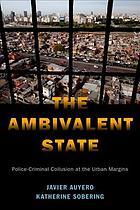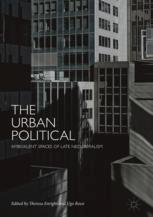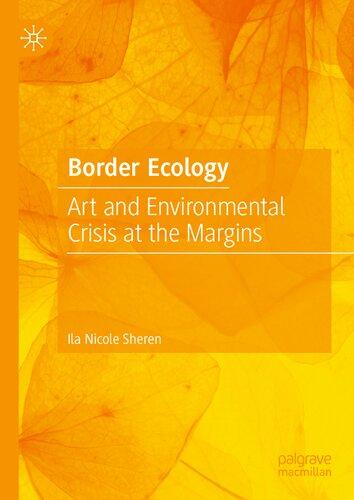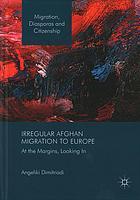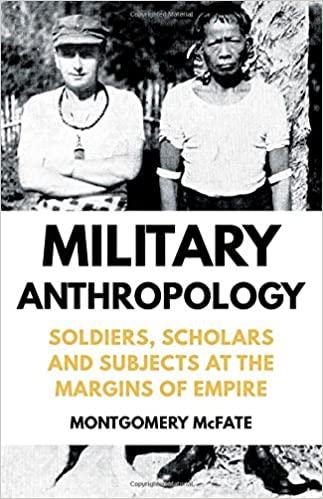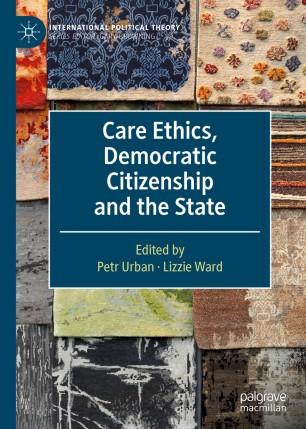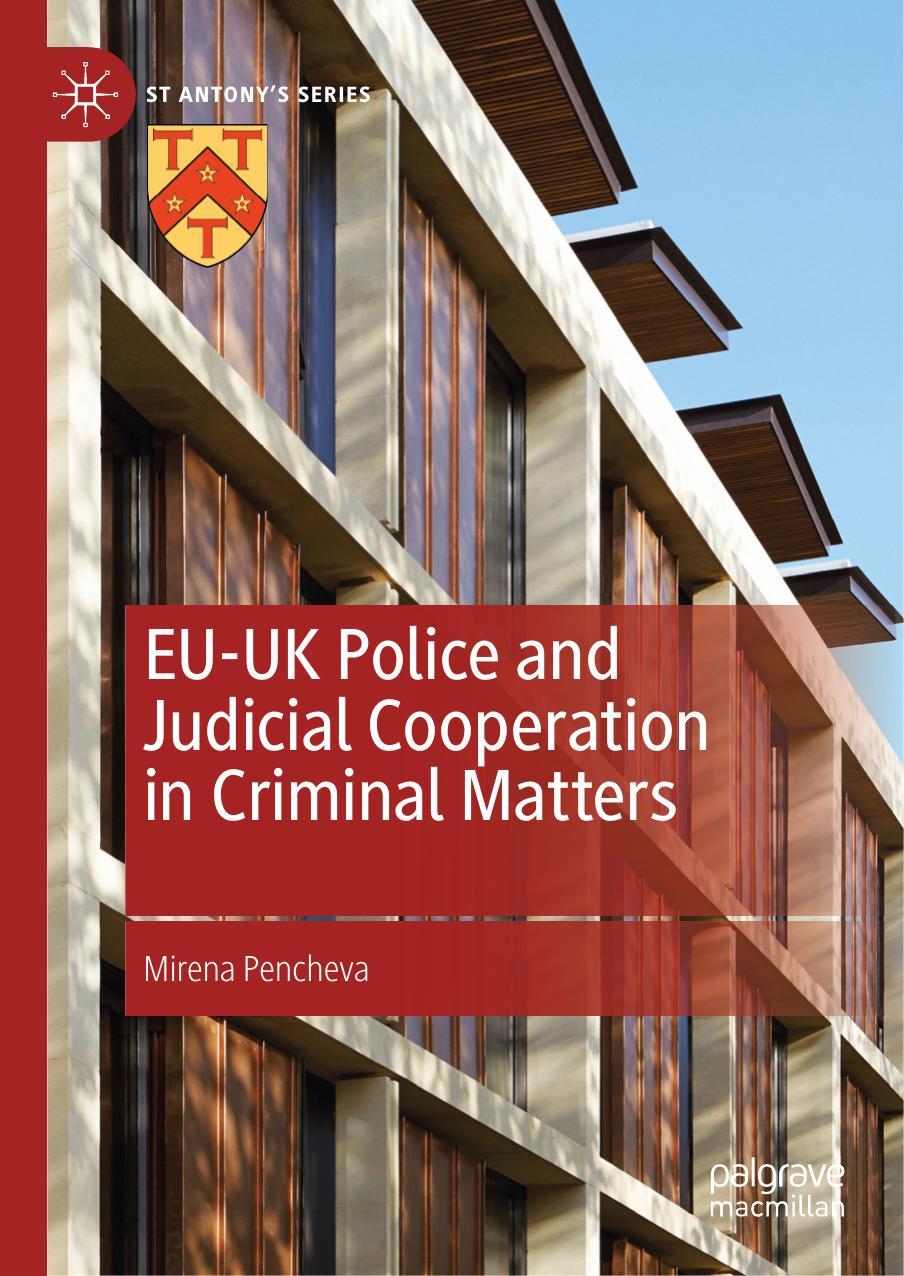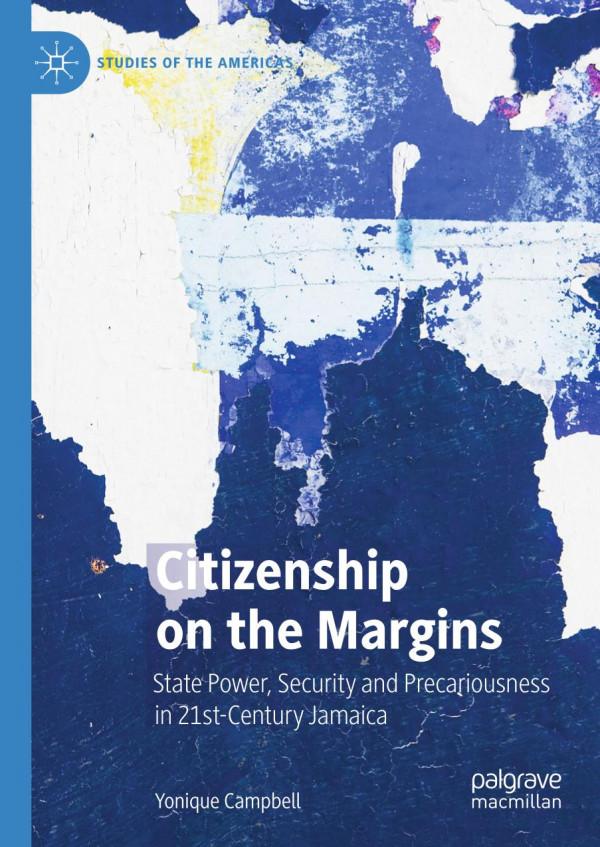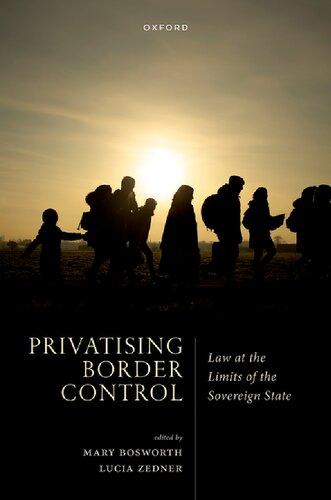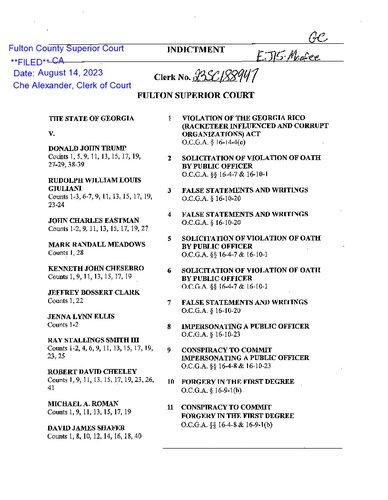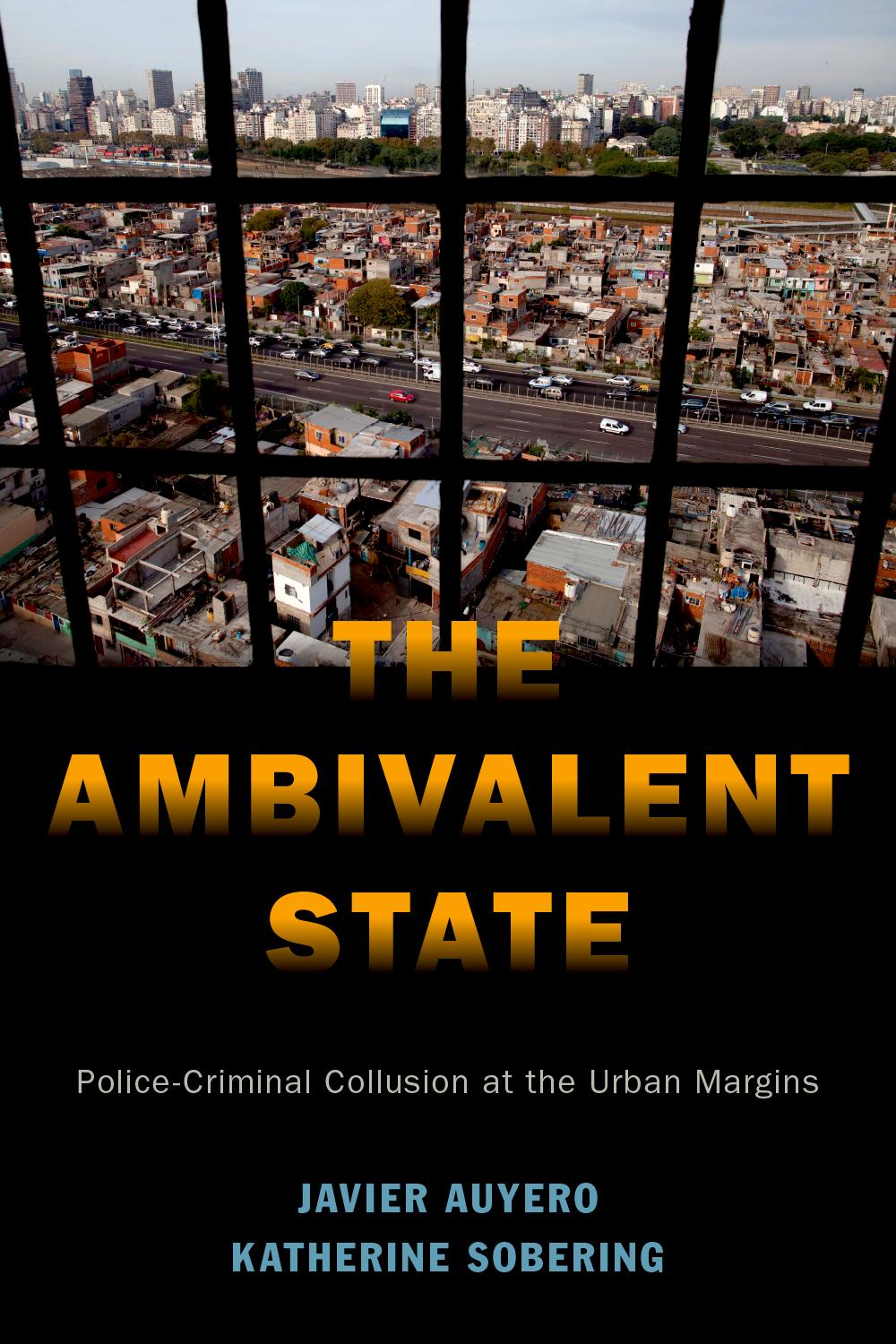Preface and Acknowledgments
A series of fortunate events brought us together to work on this book. Before this joint work, we were working on quite different (but, we would come to learn, theoretically related) projects. Katie had been conducting an ethnography of “equality projects” in Hotel Bauen, a worker-run, worker-recuperated business in central Buenos Aires. For years, Katie was immersed in the organizational life of this hotel that had been closed by its private owners, occupied by its workers, and restarted as a worker cooperative. While much of her fieldwork focused on reorganization of service under worker control, she also observed the cooperative’s longterm political campaign to legalize its use of the downtown hotel. Summer after summer, she documented the actions of myriad state actors—from building inspectors and ministry staffers to judges, city council members, and national senators—who promised very different futures. While some advocated for the hotel to be expropriated by the state (which would secure its tenancy), others threatened closure, eviction, and the almost certain dissolution of the cooperative. As state agents simultaneously proffered hope and fear, members of the cooperative were left in a legal limbo that is still unresolved at the time of this writing. While marginal in its organizational form (an occupied hotel, a worker cooperative), Hotel Bauen enjoyed a very central geographic location just blocks from the national Congress and steps off of one of the busiest intersections in Buenos Aires. Most members of the cooperative, however, made long commutes from poor and working-class neighborhoods in the province. If you board a bus near Hotel Bauen, it takes nearly an hour and a half and two transfers to arrive in Arquitecto Tucci where Javier has studied
The Ambivalent State: Police-Criminal Collusion at the Urban Margins. Javier Auyero, Oxford University Press (2019). © Oxford University Press. DOI: 10.1093/oso/9780190915537.001.0001
daily violence since 2009 (Auyero and Berti 2015). In a very different context, he also documented the intermittent, contradictory, and highly selective state presence among the urban poor. That examination of the state action was mostly a reconstruction of the ways in which one actor (the state police) appeared and was experienced in the lives of the most dispossessed: sometimes in the form of a visible police operation (a raid on a drug selling point, a full day of stop-and-frisk operations) and other times in the form of a secret deal between a street policeman and a local drug dealer. The original study remained mostly at the phenomenological level. Because the analytical focus of that research project lay in what he called “concatenations of violence,” he did not go behind the scenes to examine that modality of state intervention. But Javier remained curious about that backstage of state action—whose illicit aspects are an open secret among residents of many a marginalized neighborhood and among students of poor people’s daily lives.
During the course of our separate research projects, we now realize, both of us were grappling with analogous issues: how to make sense of conflicting and inconsistent state interventions (the police, in Javier’s case; the city council, national legislature, and the courts, in Katie’s case) among vulnerable and precarious groups.
In addition to our related lines of inquiry, we also share a vision of how to approach our research. We both believe that “the contemporary state can best be captured . . . in the way that it deals with its poor and its delinquents, its immigrants and its detainees, in the manner that it administers sensitive urban neighborhoods and waiting zones at the border, correctional facilities and detention centers, in its use of practices at once opaque and spectacular, deviant, or illegal” (Fassin 2015:3).1 With concepts and images such as assemblage, field, and pieces, plenty of recent scholarship has disaggregated and de-reified the state, ultimately questioning its unity and integrity.2 In this book, we sought to take a step further into the direction signaled by this exciting body of work. We make an argument about the character of the state in a specific time and
place (Argentina during the first two decades of the 21st century) by dissecting the resources, practices, and processes at the center of the clandestine relationships that link state actors to groups engaged in actions that the state itself defines as criminal.
Now to the series of fortunate events (and the people behind them) that made this book possible. Event One: While we were engaged in our other projects, Karen Cerulo, the editor of Sociological Forum, invited Javier to write an essay on the relationships between the state and the urban poor in the global South. That invitation prompted our initial dialogue about what we thought was missing in current scholarly conversations in urban ethnography and ways of conducting systematic research on the unseen and potentially illicit activities of state actors. A careful reading of newspaper accounts and investigative journalists’ “crónicas” alerted us to sources of much-needed information (court cases and wiretappings) that we had not seen carefully analyzed. We would soon learn that there was a handful of exemplars in the use of wiretapped conversations3 and even more in the use of legal archives.4
Event Two: Renowned Argentine journalist Cristian Alarcón put us in touch with two intrepid and extraordinary journalists and cronistas, María Florencia Alcaraz and Silvina Tamous. “They might be able to help,” he told Javier when he asked if the court cases cited in news reports might be accessible. And helped they did. Florencia and Silvina located the court cases for us and provided extremely valuable background information to help us understand them. We are immensely thankful to both. The thrill of opening a file and having access to unedited wiretapped conversations is hard to describe. The energy we gleaned from the initial success of that search in turn prompted us to revisit previous ethnographic material and undertake a new round of interviews conducted by María Fernanda Berti, Javier’s co-author of In Harm’s Way.
Event Three: Fernanda was willing, able, and eager to go back to the field. Gracias, Fernanda, for the research that was integral to developing our arguments in Chapters 2 and 3. In addition to
x Preface and Acknowledgments
Fernanda’s invaluable fieldwork, we owe a special thanks to the residents of Arquitecto Tucci who have participated in this study since its inception. This project would not be possible without your trust and collaboration, and we are indebted to your generosity and willingness to share your experiences.
Thanks also to our colleague, Mary Ellen Stitt, who helped us sharpen the argument about pathways of violence that we present in Chapter 3. A version of that chapter was published as a paper in the journal Social Forces we thank the anonymous reviewers of the piece for their helpful comments. Parts of Chapter 3 were also published as an article in the Latin American Research Review. Thank you also to Aníbal Pérez-Liñán, Guillermo Trejo, and the anonymous reviewers for helping us refine our argument about legal cynicism.
As we developed a shared reading list in political sociology, criminology, and adjacent fields, we began to dig deeper into a transactional world made visible in the wiretapped conversations. During this period, many scholars helped us make sense of our findings, pointing to research to aid in our intellectual expedition, listening to us present at conferences, and reading early versions of parts of this manuscript. We want to thank Pablo Alabarces, Desmond Arias, Nino Bariola, Sarah Brayne, Abby Cordova, Matías Dewey, Scott Decker, Gabriel Ferreyra, Sandra Ley Gutiérrez, Tina Hilgers, Alisha Holland, David Kirk, Pablo Lapegna, Benjamin Lessing, Aníbal Pérez-Liñán, Jenny Pearce, Shannan Mattiace, Marcelo Saín, Gemma Santamaría, Sharon K. Schierling, Svetlana Stephenson, Guillermo Trejo, Federico Varese, Loïc Wacquant, Vesla Weaver, and Melissa Wright. Thanks to you all!
Dennis Rodgers read many, many, many versions of this manuscript and provided incredibly helpful and detailed comments. Muchas, muchas, muchas gracias, Dennis! Next time we see each other, dinner is on us—but we choose the place.
Karen Cerulo, editor of Sociological Forum, first heard our general argument when she invited us to submit a paper for a special
issue of the journal she so deftly edits. Thanks, Karen, for that initial invitation. As we said above, this book is the product of that initial endeavor.
We presented parts of this book, either preliminary arguments or earlier versions of various chapters, at the Humanities Center at Wesleyan University, the Universidad Diego Portales in Santiago de Chile, the Institut Barcelona d'Estudis Internacionals, and in the sociology departments at Boston College, Harvard University, Johns Hopkins University, UNC–Chapel Hill, Tulane University, the University of Buenos Aires, UC–San Diego, the University of Georgia–Athens, and the University of New Mexico. We wish to thank the organizers and all those in attendance for their questions, comments, and criticisms.
We also participated in workshops at Concordia University, the University of Chicago, the University of Notre Dame, and the Universidad de Los Andes in Colombia. Participants in the workshop “Argentina en Perspectiva Sociológica” at UT–Austin heard our first full argument and provided invaluable feedback. Gracias, María Akchurin, Claudio Benzecry, Daniel Fridman, Mariana Heredia, Amalia Leguizamón, Luisina Perelmiter, Ariel Wilkis, and (again) Matías Dewey and Pablo Lapegna.
We conceived this book while we were both at the Urban Ethnography Lab, a collaborative institutional space at the University of Texas at Austin that supports qualitative research. We presented an earlier version of this work in the 2017 brownbag series. Thank you to all who attended for your feedback, and for being a part of an intellectual community that encourages creativity and collaboration. Finally, we would like to thank our families near and far. To Gabriela, Camilo, and Luis, the loves of Javier’s life, gracias “foreveranever.” To Cindi, who offered extraordinary help copyediting the final proofs, thank you! And to Melissa, thank you for being a steadfast partner and the shining light in Katie’s life. This collaboration was made possible through the depth of their love and support.
Introduction
Carolina’s Plight
For all her life, Carolina has lived in Arquitecto Tucci, a poor district on the outskirts of the city of Buenos Aires with record high rates of homicide.1 At 37 years old, she shared a two-story house with her husband, Raúl, and their three sons close to a local elementary school. As is typical in Arquitecto Tucci, Carolina’s modest home was made mostly of exposed bricks with a shingled roof and unfinished concrete floors. At night, two street lights provided very little visibility on the unpaved street that flooded when it rained. In addition to keeping house and raising her sons, three times a week she took two buses into the city of Buenos Aires, where she worked as a maid. Her commute required nearly two hours each way.
When we first approached Carolina to learn about her barrio’s most pressing problems, she seized the opportunity to talk about what mattered most to her: the jarring journey of her eldest son in and out of addiction. “My son Damián started smoking weed a few years ago and then he began doing paco,”2 she explained. “I have seen him all drugged up many times, and I know it’s not good for him. It is as if he is on high alert, as if he is somewhere else, his eyes are somewhere else. He doesn’t understand you, he doesn’t listen to you.”
Carolina’s description of her son on paco is characteristic of the drug’s effects. Cheap, accessible, and highly addictive, paco is a mixture of cocaine byproducts and a medley of other toxic fillers, which produces an intense but short-lived high. After its effects
The Ambivalent State: Police-Criminal Collusion at the Urban Margins. Javier Auyero, Oxford University Press (2019). © Oxford University Press. DOI: 10.1093/oso/9780190915537.001.0001
rapidly wear off, users are left depressed, paranoid, and in search of the next hit.
In addition to the dramatic changes Carolina witnessed in Damián’s personality, her family had also been affected by his erratic schedule and health problems. She told us, “[H]e would come back [to the house] at 4 a.m. I couldn’t sleep.” She described her anguish over seeing his mouth full of sores: “Because when he smokes, he burns his mouth. . . . It’s so sad.” Even worse, Carolina’s two younger sons were exposed to the uncertainty and strife created by Damián’s addiction. She explained, “[M]y son Brian, who is five years old, used to cry a lot because his brother was not around. Brian is the one who has suffered the most.”
Carolina spoke passionately about her difficulties trying to manage Damián’s addiction: “I used to lock him up so that he couldn’t go out to smoke.” But her attempts to restrain him to the house backfired: “[O]nce he jumped out of our balcony and broke his leg. The drugs were really hurting him.”
When he wasn’t at home, Carolina often didn’t know where Damián was or when he would be back. “[W]e spent the whole year chasing after him, rainy day after rainy day, always looking for him,” she remembered. “It was hard. We all suffered. . . . It’s horrible, you can’t even imagine. You feel your legs and your hands shaking, you have no idea what you are going to find when you are searching for him.” Perhaps worst of all, Carolina worried about the violence that Damián may have encountered as he bought, used, and rebounded from drugs: “I feared he was going to be killed, or raped. . . . My biggest fear was to find him stabbed or shot because of the drugs.”
Her powerlessness to curb Damián’s addiction manifested in deep-set frustration. When her son was high, she explained, “I wanted to kill him.” She recollected, “[O]ne night, I went out to look for him. And he was super high. . . . I beat the shit out of him, but he doesn’t remember anything. He looks at you as if in shock, with that stupid face, as if he doesn’t know what you’re talking about.”
Carolina was quick to identify the streets—where Damián spent most of his time—as the source of his addiction. She explained, “When I ask him why it is so difficult to stop, he says the drugs are in his face, everywhere he goes, drugs are all over. They sell them on the corner, they sell them across the street. He says that he cannot leave the house, because drugs are right there and they tempt him. Anywhere he goes in Arquitecto Tucci, there are drugs.”
For some like Damián, dependence on highly addictive drugs like paco was a fact of life. But many others were caught in the crosshairs of the production, distribution, and consumption of illicit drugs and the violence these processes engender. “You cannot go to work without thinking you are going to get mugged,” Carolina explained as she told us about her long commute. “There are kids who steal so that they can get money to buy drugs. I’m always watching my back. You cannot walk on the streets. Anywhere you go, you have to take a car service. We can’t live like that.” What is more, Carolina did not feel protected by law enforcement: “The cops don’t do anything. The cops are all dealers [La policía es toda transa]. They catch a dealer on this street and they let him out on the next corner.”
In describing her son’s addiction and the fear and violence in her neighborhood, Carolina gives voice and texture to the shared experience of many residents of Arquitecto Tucci. She also articulates what constitutes the empirical object of this book: the collaboration between police and drug dealers.
The Priest’s Remorse
Father Mariano Oberlín was an outspoken critic of paco.3 The drug was having, he repeatedly asserted, devastating effects on the lives of poor youth in the shantytown where he lived and worked, a hot spot of drug dealing on the outskirts of Córdoba, Argentina’s second largest city.
The son of a union and church activist who was kidnapped and disappeared in the mid-1970s by paramilitary forces, he also publicly supported the activism of Mothers against Paco. This organization, which was also very active in Arquitecto Tucci where Carolina lived is composed of mothers whose children are addicted to what is called “the poor man’s drug.”4 As a result of his visibility, Father Oberlín received death threats from local drug dealers. “Five thousand pesos for whoever kills the priest,” he once overheard as he was clearing the grounds of an abandoned plot in front of a local school.
Given the recurring intimidations, the local government assigned him a bodyguard. On December 22, 2016, according to the police report, the priest was mowing a lawn near his church when two teenagers approached him and demanded his cell phone, necklace, and the weed wacker he was using. His bodyguard came running toward him and fired several shots. A bullet killed one of the assailants, a boy named Lucas.5 Oberlín was devastated by the murder. In a public Facebook post the next day, he wrote:
I could never have imagined that the bullet I had thought for a few weeks was going to hit my head could end up in the head of a fourteen-year-old boy. If I could trade my life for this boy’s, I swear I would trade it. But even if I die, he will not be brought back to life. Today, I feel nothing makes sense. Neither the struggles of so many years, nor the convictions, nor the words so often said, nor the tireless work trying to change at least one tip of a system that is rotten to the core. I do not know how life will go on. I just know that I do not want to continue to feed this machine of violence, exclusion, and death.
This story vividly encapsulates the transformations of violence at the urban margins in Argentina and elsewhere in Latin America. Hector Oberlín, the priest’s father, confronted the threats of state and paramilitary forces until he was abducted and then killed in
a state-run concentration camp during Argentina’s last military dictatorship (1976–83). His son, Father Mariano, confronted a different form of danger: one posed by local drug dealers.6
Drug-related violence affects not only its users and dealers but also other residents. Men, women, and children living in poor communities are oftentimes caught in the middle of disputes between drug dealers. As Carolina knew well, drug addiction and consumption generate other types of interpersonal physical aggression: a violent mugging on the street, a brutal beating perpetrated by a mother on a son. As this book will closely inspect, what scholars and journalists call “drug-related” violence is not confined to participants in this illicit market but travels beyond its confines, affecting relations both on the streets and inside homes.
Violence in Latin America
During the first decades of the 21st century, most Latin American countries have witnessed an increase in urban violence, making Latin America the only region in the world where lethal violence (measured in homicide rates) is still growing without being at war.7 Political scientist José Miguel Cruz (2016:376) eloquently describes this process:
Year after year, statistics reveal signs of worsening, hitting new highs boosted by drug wars and street gangs. The latest consolidated reports on homicide rates based on data from 2012 suggest that the region’s average surpassed 20 murders per 100,000 inhabitants long ago. By 2015, Latin America and the Caribbean were home to eight of the top ten most violent countries in the world. In some of the countries of the so-called Northern Triangle of Central America (El Salvador and Honduras), Venezuela, and the Caribbean (Jamaica and Trinidad and Tobago), homicidal violence appears to have gone out of bounds, with rates ranging
from 50 to 103 homicides per 100,000 inhabitants. In Venezuela, for instance, approximately 128,580 people have been killed between 2001 and 2011, averaging 11,689 murders per year. Guatemala, Colombia, and Belize register rates greater than 25 homicides per 100,000 inhabitants. And Brazil, with the largest population in Latin America, is just above the regional average, although in absolute terms, violence there far exceeds any of the others.
This violence, analysts agree, is not evenly distributed socially or geographically, but instead concentrates in the territories where the urban poor dwell—known as favelas, colonias, barrios, comunas, or villas in different countries of the sub-continent.8 Argentina has levels of violence that are comparatively lower than the rest of Latin America but demonstrates a similar clustering of violence in poor areas and among certain people (predominantly poor young men).9
Social scientific studies point to a number of factors associated with this increasingly ubiquitous character of violence in lowincome neighborhoods: poverty, unemployment, inequality, the accumulation of structural disadvantages, the lack of social cohesion and informal social control (“collective efficacy”), and the twin influence of the illicit drug trade and the fragile legitimacy of the state’s monopoly of violence.10 This book focuses on the relationship between these last two factors, dissecting the secret and illicit connections between drug dealers and members of the state security forces.
We zoom in on these connections aware of the fact that they are part of a larger universe of state-criminal links—relations that are central to comprehend the maelstrom of violence in the region. Again, Cruz (2016:376) puts it well: When citing the cases of top government officials (in Mexico, Honduras, and Guatemala) who were involved in criminal activities, he argues that to truly understand the high levels of violent crime in Latin America it is
imperative to “study the participation of the state and its operators as perpetrators of criminal violence” (our emphasis).11
In his persuasive call for a re-invigoration of a comparative sociology of urban marginality, sociologist Loïc Wacquant (2008:11) contends that social science research needs to: specify the degree and form of state penetration in neighborhoods of relegation as well as the changing—and often contradictory— relations their inhabitants maintain with different public officials and agencies, schools and hospitals, housing and social welfare, firefighting and transportation, the courts and the police. These relationships cannot be assumed to be static, uniform, univocal.
Wacquant continues, “Among the institutions that stamp their imprint on the daily life of the populations and on the climate of ‘problem’ neighborhoods, special attention must be accorded to the police” (p. 12).12 Our book heeds this call for a close inspection of the “causal dynamics, social modalities, and experiential forms that fashion relegation” (pp. 7–8). In the chapters that follow we focus on one particular form of state penetration in territories of urban perdition—that of the police—and we zoom in on one specific set of relations: the clandestine links between police agents and drug dealers.
Pulling Back the Curtain
This book draws on a unique combination of data. These include ethnographic evidence collected over 30 months of fieldwork in Arquitecto Tucci and documentary evidence from several court cases involving drug market groups in Argentina—evidence that includes hundreds of pages of highly revealing wiretapped conversations between drug dealers and members of the state security forces, including agents of the State Police, Federal Police, Naval
Prefecture, and National Guard. With these sources, we dissect the actual content of what is known as “police-criminal collusion” and examine its connection to poor people’s perception of law enforcement and the depacification of their daily lives.
We are the first to admit that the material on which we rely in this book is indeed “messy” and does not lend itself to construct the stylized facts and neat descriptions upon which much theory- testing and modeling in the social sciences are done these days. We understand that terms such as “cohesive state apparatus” or “fragmented sovereignty” serve analytic purposes and have been useful in advancing knowledge on the origins and forms of violence. 13 But we prefer to focus on fine- grained, micro- interactive processes involving members of drug market organizations and police forces. We do this not simply because we think there are fascinating— and highly consequential— dynamics at work, but also because we think that we can contribute to the construction of a more solid foundation for sociological research on the relationship between police-criminal collusion and interpersonal violence. The following short vignettes anticipate the kinds of data we draw upon to unpack collusion.
In Argentina’s third largest city, Rosario, a member of the powerful trafficking group called Los Monos had a phone conversation with Murray, the group’s leader.14 Unbeknownst to either speaker, their phones had been wiretapped by state detectives.
“The guy from Vehicles Division [of the State Police] called [me],” the member warned Murray. “He says there’s going to be a raid on Fifth Street. They say there are high quality cars there and motorcycles. . . . I think that place belongs to you.” Later on, Murray spoke on the phone with an officer from the State Police. He asked, “Are you guys working tomorrow?” “Yes,” the policeman replied, “we are starting at 6 p.m. We have 12 search warrants.” Murray wanted to know where raids would take place: “Not towards our side, correct?” The officer then provided details about their
whereabouts: “We are going to the Chacarilla area where there’s a tire shop, but that’ll be on Saturday.”
In another wiretapped conversation, all of which are included in a 408-page indictment against members of Los Monos, another police officer told Murray: “This afternoon, the bunker [drug-selling point] at [address] will be raided.”
Far from the city of Rosario, in the district of San Martín in the west of the Conurbano Bonaerense,15 Nélida—one of the leaders of a different drug-dealing group—asked the local police chief when he was going to raid her main competitor’s stash house. According to transcriptions nested in another set of court proceedings, Nélida said, “I was wondering if something was going to be done about my little problem.” The police chief responded, “Yes, the thing is that I still don’t have the arrest warrant. I’m waiting for the prosecutor, do you understand?”
The Ambivalent State
The ethnographic material and judicial proceedings that we examined throughout this book portray the views of ordinary citizens on the law and police (mis)behavior, the widespread fear of interpersonal violence they experience, and a variety of interactions between members of groups engaged in criminal activity (specifically drug trafficking and street sales) and members of the state’s repressive apparatus. The data we analyzed fill in our understandings of police-criminal “collusion”—a term that is repeatedly heard in the news but whose actual substance remains vague and unspecified both in public discourse and in the scholarship on the topic.16
Taken together, the material we inspect gives concrete shape “to what would otherwise be an abstraction (‘the state’)” (Gupta 1995:378). “[T]he state as an institution,” write Aradhana Sharma and Akhil Gupta (2006:11), “is substantiated in people’s lives through the apparently banal practices of bureaucracies” (original
emphasis). People learn about the state in the sphere of everyday practices, such as waiting in line for a subsidy,17 paying a traffic ticket, attending a court hearing, or, as we will see in this book, suspecting or witnessing police break the law.
Research on the state in the 21st century has criticized the still widespread dichotomy between “weak” states and “strong” states.18 Cruz (2016:378), for example, points out that “the excessive focus on the debate of strong states versus weak states has hampered exploration of the complexities surrounding the role of the state in common violence.” Political scientist Enrique Desmond Arias (2006a; 2017), in turn, argues that we need to inspect the specific kinds of engagements between state and criminal actors. His research in the favelas of Rio de Janeiro dissects such engagements between criminal organizations, community associations, police, and politicians. As he describes:
Relations between police and traffickers are both violent and disorganized. Residents report that while one shift of police takes direct payments from the traffickers, other shifts maintain more distant relations. Most police do not directly take bribes from the gang. Rather, they arrest traffickers, confiscate contraband, and then ransom the jailed traffickers’ freedom and sell the drugs and weapons to other gangs.19
As readers will note, our description of the clandestine connections between drug dealers and police agents share many similarities with those described in Brazil. By examining drug market organizations that are relatively younger and levels of violence that are relatively lower compared to well-studied cases such as in Brazil, Mexico, and Colombia, our book contributes to a better comprehension of the dynamics of collusion by examining data at a granular, interpersonal level.
The overarching argument of our book is that, when closely inspecting the interactions between law enforcement and criminal
actors, the state that emerges is neither “weak” (as in descriptions of poor neighborhoods as abandoned by the state or “governance voids”) nor “strong” (as in descriptions of poor neighborhoods as highly militarized spaces firmly controlled by the state’s iron fist).20 The set of clandestine interactions between drug market participants and state actors unearthed and analyzed in the pages that follow point to a state that is a deeply ambivalent organization, a state that enforces the rule of law while at the same time (and in the same place) functions as a partner to what it defines as criminal behavior.
When highlighting the ambivalent character of the state, we are not referring to “sociological ambivalence,” a concept elaborated by Robert K. Merton and Elinor Barber (1976:5) to denote the ambivalence that comes to be “built into the structure of social statuses and roles.” Rather, we use the term “ambivalent” in the literal sense, defined by the Oxford English Dictionary as “having either or both of two contrary or parallel values, qualities or meanings; entertaining contradictory emotions (as love and hatred) towards the same person or thing; acting on or arguing for sometimes one and sometimes the other of two opposites; equivocal.”21
We embarked on the project of unearthing clandestine connections between state security actors and drug dealers with the dual aim of understanding not only violence but also the type of state with which the poor interact on a daily basis and the meanings conveyed through these interactions. In the pages that follow, we do not provide a comprehensive review of what the state is and what it does (or should do).22 Rather, our approach to the state emerges from a general consensus around its definition as the set of organizations that hold a monopoly on the use of legitimate force. The state is “defined as a complex of interdependent institutions, differentiated from other institutions in society and legitimate, autonomous, based upon a defined territory and recognized as a state by other states,” and “characterized by its administrative capacity to steer, to govern a society, to establish constraining rules, property
rights, to guarantee exchanges, to tax and concentrate resources, to organize economic development and to protect citizens” (King and Le Gales 2012:108). The state also has a symbolic dimension in which the production of belief in the state and its authority (i.e., legitimation and its recognition) takes center stage. Attention to this dimension will prove key to making sense of poor people’s understandings of law enforcement and their feelings of betrayal by members of the security apparatus.23
Most students of the modern state would not list coherence as its defining characteristic.24 According to Bob Jessop (2016), for example, the state is a “polyvalent, polymorphous assemblage” in which various “state projects” compete with one another (p. 26). Ambivalence with respect to the law is a feature, in Jessop’s view, of every modern state: “[M]any states routinely infringe their own legality—whether openly or beneath the cloak of official secrecy, whether at home or abroad—by relying on a mix of terror, force, fraud, and corruption to exercise power” (p. 28). For Pierre Bourdieu (2015), to cite another example, the state is a field, an arena where a plurality of agents, groups, and institutions are in constant struggle. Tensions and contradictions are, in other words, germane to the state. Although contending actors endowed with different resources and “unusual strengths” pursue various and sometimes conflicting agendas, they all share a general orientation (p. 32). In this field, action is “oriented largely toward imposing the state’s will on society at large” (Steinmetz 2014:5).
Most scholars of the state would thus probably find our claim about the state’s ambivalence tautological. States, they would almost certainly argue, are always ambivalent. We concur. What we will show is that state agents simultaneously enforce and break the law in the same marginalized space and among the same relegated people. In this book, we provide empirical evidence of a more specific, grounded instantiation of ambivalence in the lower regions of the social and geographical space. The state might always be ambivalent, but the specific ambivalence we will uncover, based
on detailed attention to the resources, practices, and processes that link state agents and drug dealers, shape interpersonal violence and produce a widespread mistrust of law enforcement agents.
What is more, state action and intervention are not isolated from other institutions. As Jessop (2016:57) explains well, “How and how far state powers (and any associated liabilities, vulnerabilities, and incapacities) are actualized depends on the action, reaction, and interaction of specific social forces located in and beyond the state.” Although he did not have illicit links in mind, Jessop’s point still applies: Clandestine connections pull state actors away from “imposing the state’s will” (as Steinmetz [2014:5] argues) and into a different and illicit direction. As we will demonstrate, state security agents involved in collusive relations abdicate the orientation to impose the state’s will on others and instead attempt to enforce their own will for their own benefit. They do so by using the power that comes from their belonging to the state apparatus.
The empirical evidence we will present points to a state whose presence at the urban margins displays, as we said above, two coexisting and seemingly contradictory qualities: acting simultaneously as an enforcer of the rule of law and an accomplice to criminal acts.25 Security forces patrol the streets, conduct sudden raids, and set up checkpoints. Police agents use violent stop-and-frisk tactics and excessive force to fill jails and prisons. These are not, to reiterate, signs of an absent or a weak state.26 Rather, we will show that the same state concurrently partakes in criminal activities in a variety of concealed ways. This participation has important consequences. As Cruz (2016:377) perceptively notes, it “increases the repercussions of crime, reproduces impunity, makes state institutions partners in crime, and transforms the parameters of legitimacy of the regime.”
We set forth to make an argument about the state’s ambivalence by meticulously showing (as different from simply telling and theorizing) the inner workings of collusive relations. In order to unpack collusion, The Ambivalent State presents, in as
close empirical detail as possible, the exchanges of material and symbolic resources between drug dealers and state agents, as well as the practices and relational processes that constitute collusion. We argue that illicit relationships help drug market organizations in their efforts to establish an economic monopoly over a certain territory that is central to their illegal trade. We also demonstrate that this set of clandestine relationships between police officers and dealers (a) shape the systemic violence that often accompanies the market for illegal drugs and contributes to the constitution of what Janice Perlman (2010) calls the “violence stew” in poor urban areas,27 and (b) give form to what criminologists call “legal cynicism”—the shared belief that law enforcement agents are “illegitimate, unresponsive, and ill equipped to ensure public safety” (Kirk and Papachristos 2011:1191).28 Poor people share the belief that, when it comes to the drug trade and controlling the related violence, the state is inept and biased and that it engages in what we will call disorganized organized crime.
Joining the “relational turn” in the social sciences, sociologist Matthew Desmond (2014) makes a case for “relational ethnography.”29 He argues that ethnographers should shift the substantive and analytic focus of inquiry from groups and places to relations, conflicts, boundaries, and processes.30The Ambivalent State further develops a two-decade long research agenda that has scrutinized the relationships between the state and the urban poor.31 Although we spend a lot of time and effort trying to figure out how residents, police officers, and drug dealers—alone or in groups—think, feel, and act, our analytic object lies in the relationships between them. To make clear our focus: Think of clapping. We are not examining the hands that strike each other but the percussive sound that is produced by—and figuratively lies between—those striking hands. This is a study not of a neighborhood (Arquitecto Tucci), a group of people (its residents), or an organization (the police force or drug gang) but of the relations (sometimes overt, sometimes covert) of
conflict or cooperation between them—and the experiences and actions that result.32
These relations, it is important to note, do not exist in a vacuum but are shaped by particular economic and political contexts. Economic and political forces and structures determine—in the sense of setting limits and exerting pressures, as Raymond Williams (1978) would say—the resources exchanged, the practices in which actors engage, and the processes that link them. Of particular importance in understanding what “constrain[s], impel[s], and impress[es]” (Salzinger and Gowan 2018:62) upon the dynamics of collusion are the transformations in the policing and drug trafficking, which we review in Chapter 1.
A Note on Methods: Ethnography and Court Case Analysis
This project is a continuation of the examination of violence and urban poverty initiated in the book In Harm’s Way (Auyero and Berti 2015). That book touched on collusion between drug dealers and police agents but did not fully examine the preliminary data found on the topic. For this book, we re-analyzed the extensive fieldwork conducted for that project, collected several more interviews in Arquitecto Tucci focused specifically on the links between drug consumption, trafficking, violence, and police (in)action, and scrutinized court cases involving members of drug market organizations and state security forces.
Ethnography, Revisits, and Re-analysis
Between April 2009 and August 2012—with the interruptions of the winter and summer academic recesses—María Fernanda Berti, one of the co-authors of In Harm’s Way, registered her activities as a
primary school teacher in a field diary. These included her experiences in the neighborhood where she worked combined with the stories recounted by her students, those told by other teachers and school personnel, and information shared by parents. She always used pseudonyms to identify the people she discussed. Agustín Burbano de Lara joined the project as a research assistant in 2010 and 2011. He visited Arquitecto Tucci two or three times a week for six months and established a trusting relationship with the coordinators of a local soup kitchen. Through them, he got to know many other residents: first, neighbors who visited the soup kitchen and then others through those connections. The interviews he conducted had a more informal character than the unidirectional exchange typical of research protocols and were conducted after weeks, and sometimes months, of mutual acquaintanceship.33
For this project, we re-examined the data produced during that fieldwork. Our analysis involved a re-coding of field notes and previously transcribed interviews. But this time, we focused on interactions between police, drug dealers, and neighbors. Specifically, we concentrated our attention on residents’ descriptions and evaluations of what they called the “arreglo”—the illicit relationships between police agents and drug dealers. In this text, we use the pronoun “we” when describing this ethnographic fieldwork to refer to the team-based nature of its collection, not our own exclusive presence.
At the time of writing, María Fernanda Berti still works as a teacher in Arquitecto Tucci. In 2018, she conducted 14 additional interviews with five political brokers, the local priest, and eight additional residents. These new interviews focused on their personal experiences with collusion, violence, addiction, and the ways these individuals navigated nearby drug-selling operations and rumors about corrupt police. This rich qualitative fieldwork and interview material constitute the data used to not only inspire the rest of this study but also to orient our discussion of collusion and legal cynicism that we develop in Chapter 3.
